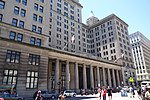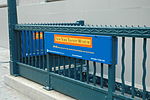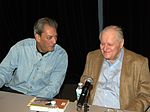Brooklyn Academy of Fine Arts
1945 disestablishments in New York (state)AC with 0 elementsArt schools in New York CityBrooklyn building and structure stubsDefunct art schools ... and 9 more
Defunct schools in New York CityEducational institutions disestablished in 1945Educational institutions in the United States with year of establishment missingNew York (state) university stubsNew York City school stubsUnited States arts organization stubsUniversities and colleges in BrooklynUse American English from May 2016Use mdy dates from May 2016
The Brooklyn Academy of Fine Arts was a small, short-lived art academy located at 85 Court Street in the New York City borough of Brooklyn. The sole instructor at the academy was Michael Falanga. The school closed in 1945.
Excerpt from the Wikipedia article Brooklyn Academy of Fine Arts (License: CC BY-SA 3.0, Authors).Brooklyn Academy of Fine Arts
Court Street, New York Brooklyn
Geographical coordinates (GPS) Address External links Nearby Places Show on map
Geographical coordinates (GPS)
| Latitude | Longitude |
|---|---|
| N 40.69131 ° | E -73.99131 ° |
Address
Court Street 85
11201 New York, Brooklyn
New York, United States
Open on Google Maps










